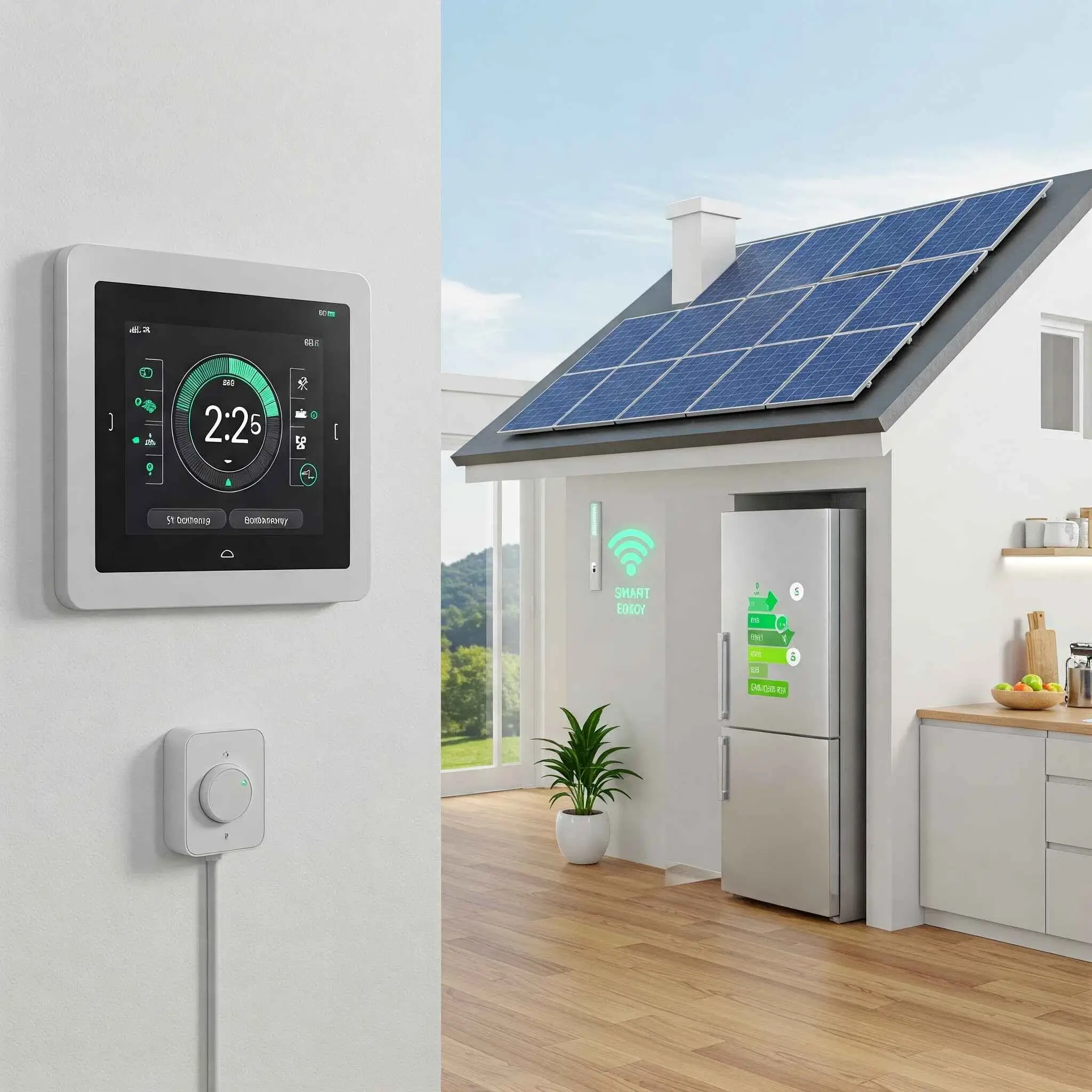Introduction
- As climate change becomes a growing concern, homeowners are seeking ways to reduce their carbon footprint while maintaining efficiency and convenience. The good news is that technological advancements have led to the development of green gadgets—smart devices that help reduce energy consumption, lower electricity bills, and promote an eco-friendly lifestyle. From smart thermostats to solar-powered appliances, these tools are transforming homes into sustainable living spaces.
- In this article, we’ll explore five top green gadgets that can help you cut down on energy waste, reduce carbon emissions, and make your home more eco-friendly. We’ll also discuss their benefits, cost savings, and potential challenges to help you make informed decisions.
1. Smart Thermostats
How They Work
- Smart thermostats are designed to optimize heating and cooling in your home by learning your schedule and adjusting temperatures automatically. These devices can be controlled remotely via smartphone apps and integrate with other smart home systems.
Environmental Benefits
Reduces unnecessary heating and cooling, lowering energy waste.
Prevents overheating and overcooling by adapting to outdoor temperatures.
Helps households cut down carbon emissions by reducing power consumption.
Estimated Energy and Cost Savings
Can reduce heating and cooling costs by 10-20% annually.
Helps lower carbon emissions by up to 1000 pounds per year.
Challenges
Initial cost: Premium models can be expensive.
Compatibility issues: Not all HVAC systems support smart thermostats.
2. Solar-Powered Home Devices
How They Work
- Solar-powered devices harness sunlight to generate electricity. They range from solar panels to solar-powered water heaters, outdoor lights, and phone chargers.
Environmental Benefits
Reduces reliance on fossil fuels, decreasing overall carbon emissions.
Provides renewable and sustainable energy.
Decreases dependence on grid electricity.
Estimated Energy and Cost Savings
Solar panels can cut electricity bills by 50-90%.
Solar water heaters reduce water heating costs by 50-80%.
Challenges
High upfront investment: Installation costs can be significant.
Weather-dependent: Less effective in areas with limited sunlight.
3. Smart Lighting Systems
How They Work
Smart lighting systems use LED bulbs, motion sensors, and automated controls to optimize home lighting and minimize energy waste.
Environmental Benefits
LED lights consume 80% less energy than traditional incandescent bulbs.
Motion sensors turn off lights in unoccupied rooms.
Can be programmed to use natural light effectively.
Estimated Energy and Cost Savings
Reduces lighting energy consumption by up to 80%.
Can save up to $225 per year on electricity bills.
Challenges
Initial setup cost: Smart bulbs and hubs can be pricey.
Learning curve: Requires setup and customization for maximum efficiency.
4. Energy-Efficient Appliances
How They Work
Modern appliances with ENERGY STAR ratings use advanced technologies to reduce electricity and water consumption.
Environmental Benefits
Smart refrigerators adjust cooling based on usage patterns.
Energy-efficient washing machines use less water and detergent.
Smart dishwashers optimize water and heat usage.
Estimated Energy and Cost Savings
Can reduce appliance energy use by 20-50%.
Households can save hundreds of dollars annually on energy bills.
Challenges
Higher upfront costs compared to traditional appliances.
Requires replacing older appliances, which may not be feasible for all homeowners.
5. Smart Power Strips & Energy Monitors
How They Work
Smart power strips detect when devices are in standby mode and automatically cut off power to prevent “phantom energy drain.” Energy monitors track real-time electricity usage and provide insights on energy-hungry devices.
Environmental Benefits
Eliminates unnecessary power consumption from idle devices.
Provides homeowners with actionable insights to reduce electricity usage.
Helps in identifying inefficient appliances.
Estimated Energy and Cost Savings
Prevents up to 10% energy waste from unused devices.
Can save $100-$200 per year on electricity bills.
Challenges
Limited impact on high-energy appliances like refrigerators and heating systems.
Some models require Wi-Fi connectivity, which may be a concern for certain users.
Comparison Table of Top 5 Green Gadgets
| Gadget | Key Features | Estimated Energy Savings | Best For |
| Smart Thermostats | Learning AI, geofencing, remote control | 10-20% reduction in heating/cooling | All homes |
| Solar-Powered Devices | Renewable energy, government incentives | Varies based on device | Eco-conscious homes |
| Smart Lighting Systems | LED bulbs, motion sensors, automation | Up to 80% energy savings | Smart homes |
| Energy-Efficient Appliances | Low water/electricity use, ENERGY STAR | 20-50% energy reduction | Large households |
| Smart Power Strips & Energy Monitors | Prevents standby power drain, tracks usage | 5-10% reduction in energy bills | Tech-savvy users |
Challenges and Considerations
While green gadgets are beneficial, they also come with some challenges:
Initial Costs: Many smart and energy-efficient devices require a significant investment upfront.
Compatibility Issues: Not all older homes are equipped to handle advanced smart technologies.
Privacy and Security Concerns: Smart home devices connected to Wi-Fi may pose data security risks.
Conclusion
- Investing in green gadgets is a practical and effective way to reduce your home’s carbon footprint while also cutting energy costs. Smart thermostats, solar-powered devices, smart lighting, energy-efficient appliances, and power-saving gadgets can help you create a more sustainable home.
- By making small changes and integrating energy-efficient technologies, homeowners can contribute to a greener planet while enjoying long-term savings. Whether you start with a smart thermostat or switch to LED lighting, every step towards sustainability makes a difference.
Disclaimers
Energy savings may vary depending on home size, insulation, and usage habits.
Upfront costs may be high for some gadgets, and savings depend on long-term use.
Compatibility with existing home systems should be checked before purchasing smart gadgets.
Author Name: Dipika Kumari
Publication Date: 27-03-2025
Email: [email protected]
